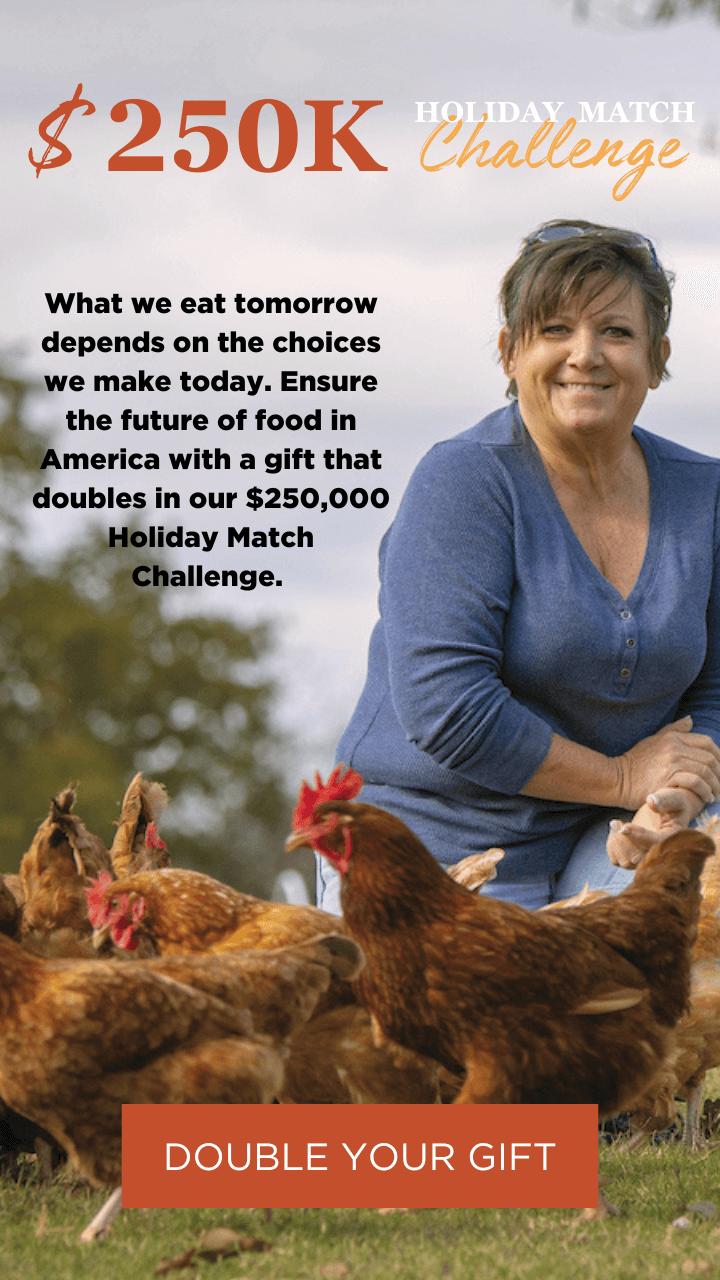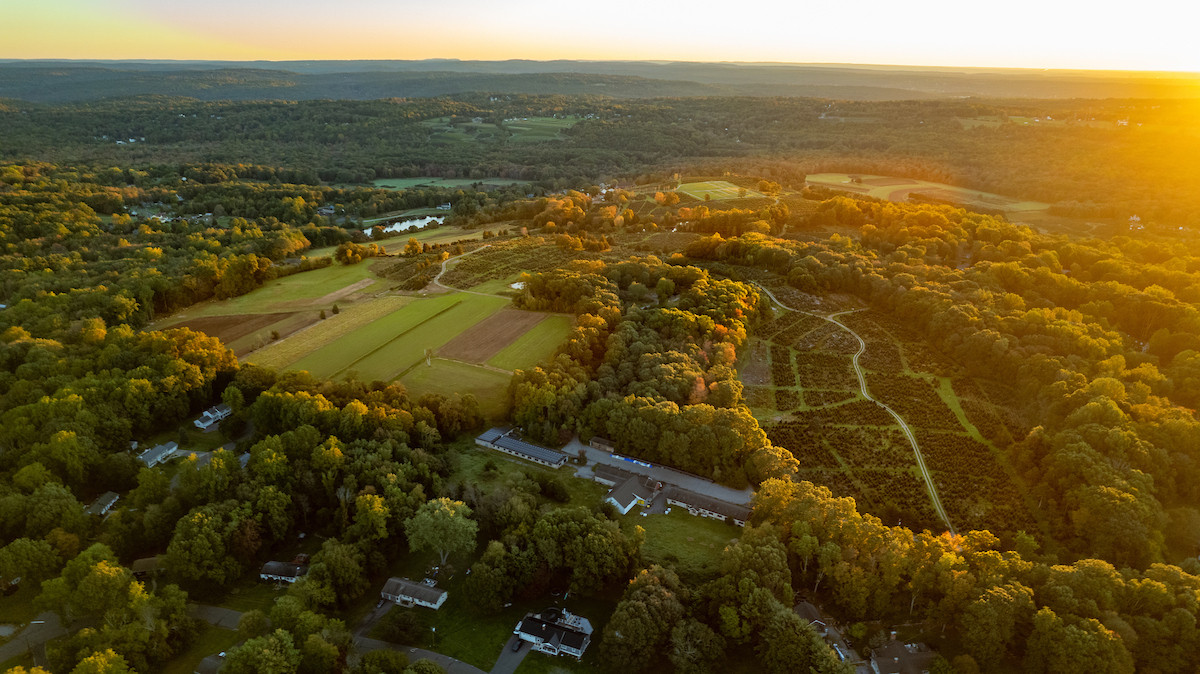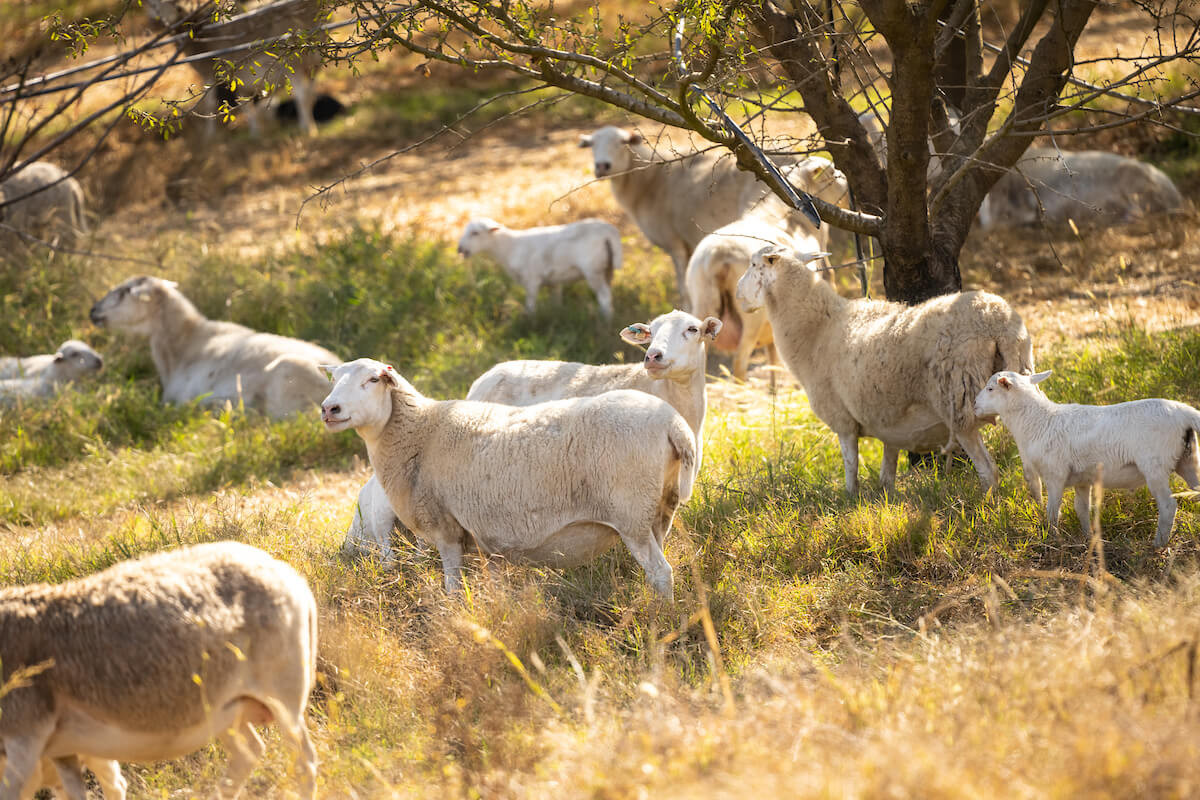Vermont’s Scott Farm Orchard: Building Resilience in a Changing Climate
Scott Farm Orchard in Dummerston, Vermont, is known for its history and its apples. The 571-acre property, with its historic barns and rows of fruit trees, is home to more than 130 heirloom apple varieties. The farm is managed by orchardist Erin Robinson and general manager Simon Renault, who are tasked with maintaining its heritage while also preparing it for the realities of farming in Vermont’s changing climate.
For many years, Scott Farm produced a steady crop of apples that drew visitors from across New England. But the stability of those harvests has been challenged. Winters are warmer, storms are more extreme, and frosts arrive at unexpected times. In 2023, a single late frost wiped out nearly the entire apple crop. The farm, which usually harvests around 12,500 bushels, brought in only about 1,200.
That year was a turning point for the orchard. “I always thought these things wouldn’t happen to me,” Erin said. “And then it did.”
Responding to Loss
The frost damage forced the farm to rethink its approach. Without apples, there was little to sell at the farmstand, less cider to press, and scanty fruit for visitors to pick. The massive crop loss pushed Erin and Simon to develop a more deliberate climate adaptation strategy.
“Each year never replicates the same weather,” Erin said. “We’re always pivoting, making decisions day to day, hour to hour, shifting with the weather. The extremes are what’s hardest now — extended heat waves, sudden cold plunges, heavy rain or no rain at all. Those swings are more difficult to work with because the impacts are harsher.”
While there is no way to eliminate that risk, Scott Farm is working to reduce it. Frost fans now help protect vulnerable blocks from cold spring nights. Semi-dwarf and semi-standard rootstocks provide more resilience than high-density systems. New plantings of late-blooming cider varieties and chestnut trees diversify the farm’s income and reduce reliance on any single crop.
Diversification and Value-Added Strategies
In addition to apples, the farm grows ginger and tomatoes in high tunnels that were constructed with support from NRCS cost-share programs. The ginger, in particular, has become a high-value crop because it’s used to make the farm’s best-selling ginger cider. Diversification like this provides insulation when apple harvests are low and creates new opportunities for value-added products like cider, frozen juice, baked goods, and prepared foods, which extend the season and improve margins.
Hard cider has become central to the farm’s resilience strategy. Unlike fresh apples or sweet cider, which are highly seasonal, hard cider can be stored, sold year-round, and shipped further afield. It also creates a market for fruit that might otherwise be lost to blemishes or weather damage. Hard cider sales carry stronger margins than wholesale apples, helping stabilize income in low-harvest years. Sweet cider still plays a role—especially with local customers in the fall—but it is the hard cider operation that has given Scott Farm more financial stability and room to innovate.
As Erin put it: “Hard cider has been a lifesaver. Sweet cider is great, but it’s perishable and mostly just for the fall. Hard cider we can sell all year, and the margins are much better.”
The farm has also invested in agritourism: a café, weddings, and events now provide both revenue and community connections. While these activities represent only a small share of overall income, Simon refers to them as “five percenters”— pieces that may be small individually but build resilience when added together.
Soil health work has also become part of the farm’s adaptation. Cover crops like sorghum-sudangrass, tillage radish, and winter rye improve infiltration, reduce erosion, and build organic matter. “We need to manage today’s challenges,” Erin said, “while also preparing our soils for the extremes ahead.”
Community as Infrastructure
When the 2023 frost hit, Scott Farm found resilience in an unexpected place: its community. Neighbors, customers, and supporters quickly rallied. A GoFundMe campaign raised $30,000. Scott Farm staff organized a benefit concert, Orchard Aid, to bring people together in support of all the locally impacted orchards. Local artisans even donated gifts, such as embroidered tablecloths for the café.
Simon calls this “invisible infrastructure.” While frost fans and tractors matter, the farm’s social capital — relationships with neighbors, customers, and partners — is equally important. “Community connections will sustain us,” he said.
Erin echoed this sentiment: “Farming can feel powerless in the face of weather, but knowing people believe in what we do — that’s what keeps us going.”
Passing On Knowledge
Vermont climate resilience is not only about infrastructure and crops — it’s also about people and knowledge. Erin holds much of the farm’s orchard knowledge, from the timing of sprays to the layout of heirloom varieties. “If I’m not here to say what to spray, where, and when, that knowledge could be lost,” she admitted.
To address this, Scott Farm has begun mapping the orchard, training younger staff, and passing down knowledge through daily work. “It will take many years to have this information thoroughly passed on,” Erin said. “But we’re hopeful the timeline is long enough.”
Networks of Support
Scott Farm also benefits from broader networks. Erin has built connections with other orchardists, cider makers, scientists, and pomologists. “The apple world is much bigger than I imagined when I started,” she said. “Being connected to people who know more than I do has been the only way to keep learning.”
Simon is cautious about seeing Scott Farm as a model for others. “There’s so much trial and error in what we do,” he said. “What works here might not work elsewhere. But sharing experiences across networks helps us all adapt.”
Looking to the Future
Erin and Simon have a clear vision for Scott Farm by 2050. They imagine diversified orchards with both popular heirlooms and rare educational varieties, other fruits and nuts grown at scale, and a stronger focus on value-added products like cider and baked goods. They see the café and agritourism expanding, making the farm a year-round destination for food and community.
“The roots of our resilience are in our staff and faithful customers,” Erin said. “Scott Farm should be a place where people gather and enjoy healthy food.”
When asked what they would do if resources weren’t a barrier, the list is long: more frost fans, expanded cooler space, larger café and cidery, and new irrigation ponds and swales. All are part of a vision of resilience built on diversity, infrastructure, and people.
Conclusion
Scott Farm is not immune to the challenges of climate change. A single night of frost showed just how vulnerable fruit growing has become. But the farm’s response — through diversification, adaptation, and community support — shows that resilience is possible.
Resilience at Scott Farm is not a single investment or practice. It is a combination of strategies: better infrastructure, diversified crops and income, soil health, knowledge transfer, and community connections. Each one builds on the others.
As the farm looks ahead, it carries both the weight of uncertainty and the strength of its history and community. Scott Farm continues to adapt, balancing its rich heritage with the urgent need for change.
~
Scott Farm’s adaptation plan is one of six developed through the Planning for Adaptation and Resilience to Climate Change (PARCC) project, a collaborative effort designed to help Vermont farmers strengthen resilience to extreme weather and shifting growing conditions. The project’s goals include co-creating practical tools for climate planning, integrating farmer perspectives, and providing both technical and financial assistance. By sharing stories like Scott Farm’s, PARCC aims to demonstrate what climate adaptation looks like in practice and to inspire peer-to-peer learning across the region. Read more about AFT New England’s work helping farmers address challenges caused by climate change here.











